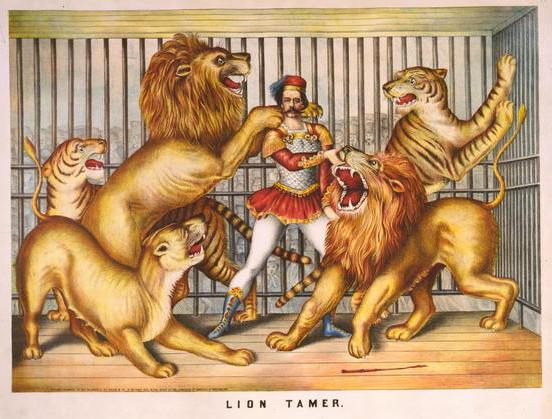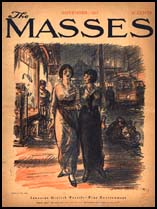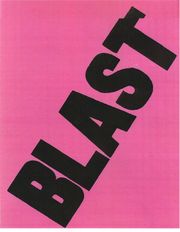 "Essays, like butterflies, jazz (and God), move irregularly, not linearly," wrote Edward Hoagland in his diaries (originally published in Paris Review no. 162). The best experimental essays--those that, like jazz, do not conform, that are in many ways defined by their resistance--seem to vibrate with a hidden knowledge. Or not knowledge perhaps, but perspective.
"Essays, like butterflies, jazz (and God), move irregularly, not linearly," wrote Edward Hoagland in his diaries (originally published in Paris Review no. 162). The best experimental essays--those that, like jazz, do not conform, that are in many ways defined by their resistance--seem to vibrate with a hidden knowledge. Or not knowledge perhaps, but perspective.Michael Heller's free-form essay "Beckmann Variations" on the German painter Max Beckmann (1884-1950) published in the fall 2007 issue of New England Review (vol. 28 no. 3) is a cogent example of Heller's own ruminations on the function of art. Heller writes, "But then, what does any work of art do but intensify perception by limiting it?" The essay is about Heller and his wife seeing a retrospective of Beckmann's paintings at London's Tate Modern museum, and, like the best essays since Montaigne, it is a perceptive look not only at the subject of the paintings, but also into the slippery mind of Heller viewing the work. Heller's piece seems to argue that one of the most intriguing things about essays is that they allow a reader to watch the mind think. In the essay, he quotes Yeats on this issue: "In Per Amica, Yeats cites approvingly a critic who insists that, 'learning to know one's own mind, gradually getting the disorder of one's mind in order, led to the real impulse to create.'" Reading the essay one realizes that this reviewer's comment could as easily be applied to the painter Beckmann as it could to the essayist Heller.
Mostly widely recognized as a poet, Heller is also well-known as an essayist and memoirist; his 2000 memoir Living Root charts connections between Heller's Brooklyn and Miami boyhood with Poland and WW II. It is hard not to think that in his essay on Beckmann Heller's essayist talents are at their peak. Even in the company of this issue of NER's usual powerfully erudite and imaginative writings, "Beckmann Variations" stands out, not only because of Heller's own provocative rhizomatic interweaving of diverse subjects and themes in order to more effectively approach Beckmann's paintings with language, but also because of the essay's architectural ingenuity, an organic hybridity of poetry and prose--each section of the essay pivots around alternating poetic and prose riffs on the larger subject of Beckmann's paintings (or the even larger subject of our responses to works of art).
 One major theme of "Beckmann Variations" is the idea of degenerate art. Heller writes, "Beckmann's work, along with that of most of Germany's modernist masters, was included in the Nazi's display of 'degenerate art,' the 'Entartete Kunst' exhibition held in Munich in July of 1937....Hitler made a speech to the nation about this un-German art. Beckmann heard the broadcast, packed his belongings, and with his wife fled Germany the next morning, never to return." And, eventually, they came to America, where in 1950 he would die of a heart attack on his way to the Metropolitan Museum of Art to see his painting "'Self Portrait in Blue Jacket,' which was hanging there in an exhibition." Would this painting have been considered degenerate by Hitler's standards? One can only hope so. As Heller shows us, much of Beckmann's work was devoted to artistic rebirth, which included a refashioning of modes and genres of painting. As usual, Heller explains in his continually quotable style: "Most serious and important art changes prevailing conceptions in such a way that it only nominally belongs to the species it came from. Beckmann's work was 'entartete,' belonging only to the flora or fauna of pictures then existing; it was already a rebuke to the art culture in which it had been created."
One major theme of "Beckmann Variations" is the idea of degenerate art. Heller writes, "Beckmann's work, along with that of most of Germany's modernist masters, was included in the Nazi's display of 'degenerate art,' the 'Entartete Kunst' exhibition held in Munich in July of 1937....Hitler made a speech to the nation about this un-German art. Beckmann heard the broadcast, packed his belongings, and with his wife fled Germany the next morning, never to return." And, eventually, they came to America, where in 1950 he would die of a heart attack on his way to the Metropolitan Museum of Art to see his painting "'Self Portrait in Blue Jacket,' which was hanging there in an exhibition." Would this painting have been considered degenerate by Hitler's standards? One can only hope so. As Heller shows us, much of Beckmann's work was devoted to artistic rebirth, which included a refashioning of modes and genres of painting. As usual, Heller explains in his continually quotable style: "Most serious and important art changes prevailing conceptions in such a way that it only nominally belongs to the species it came from. Beckmann's work was 'entartete,' belonging only to the flora or fauna of pictures then existing; it was already a rebuke to the art culture in which it had been created."(Pictured above: "Falling Man" (1950) , 141 x 88.9 cm., National Gallery of Art, Washington.)





No comments:
Post a Comment